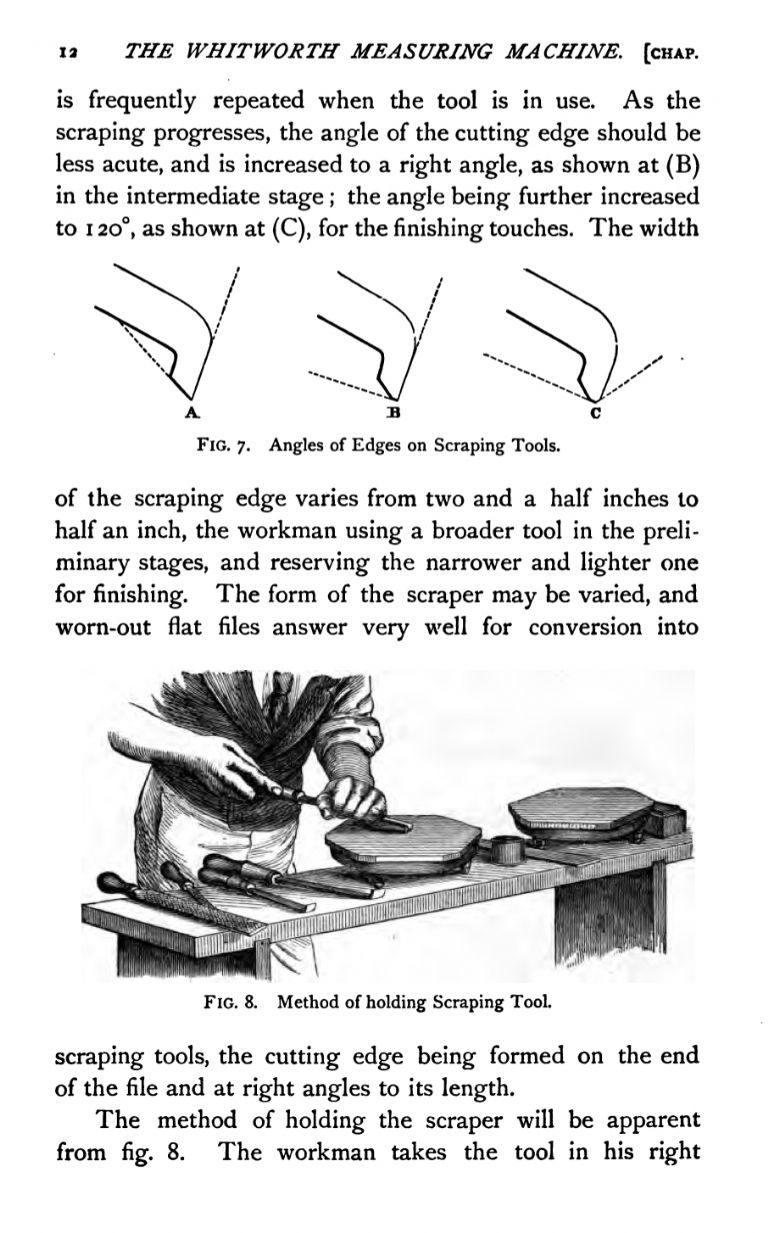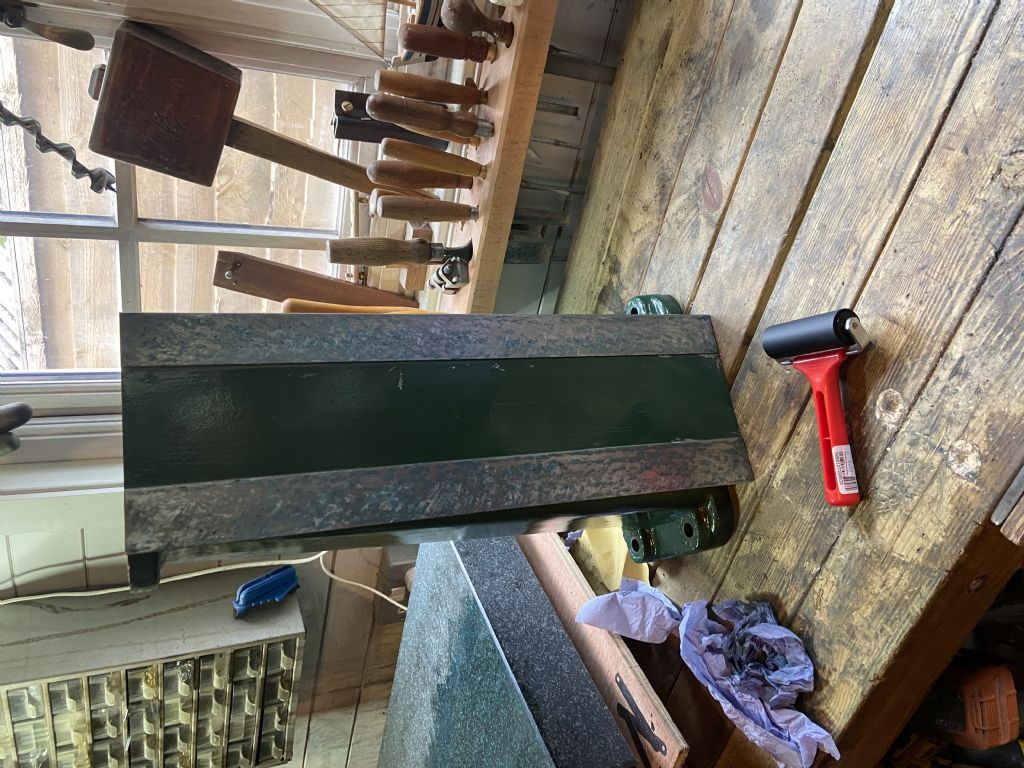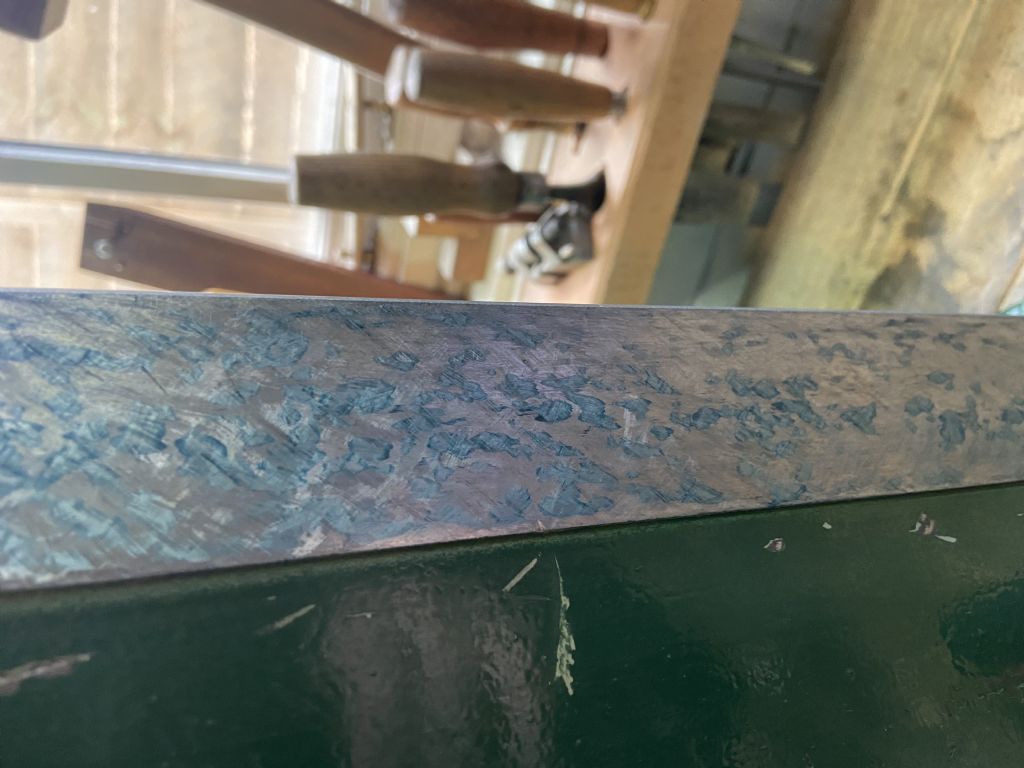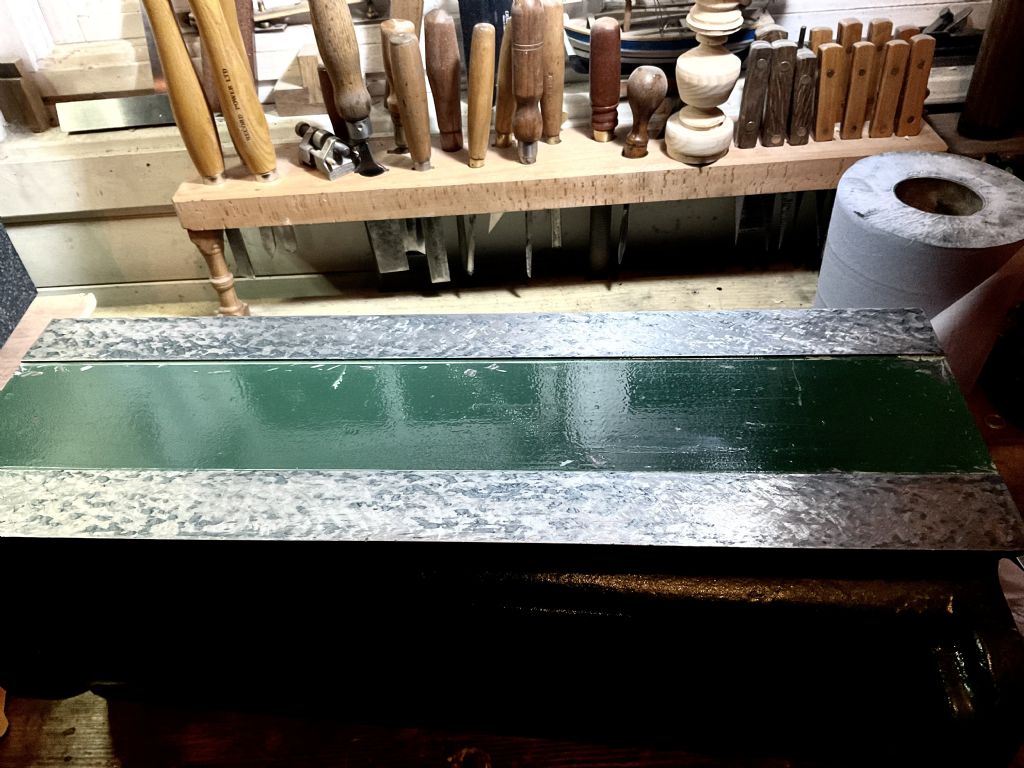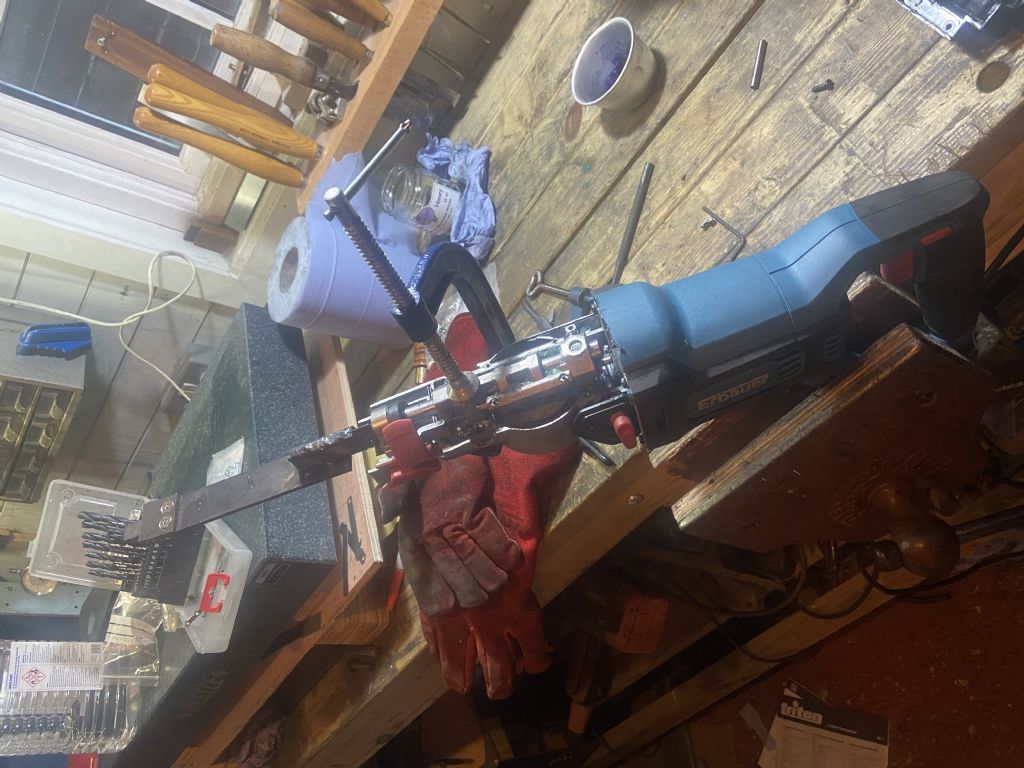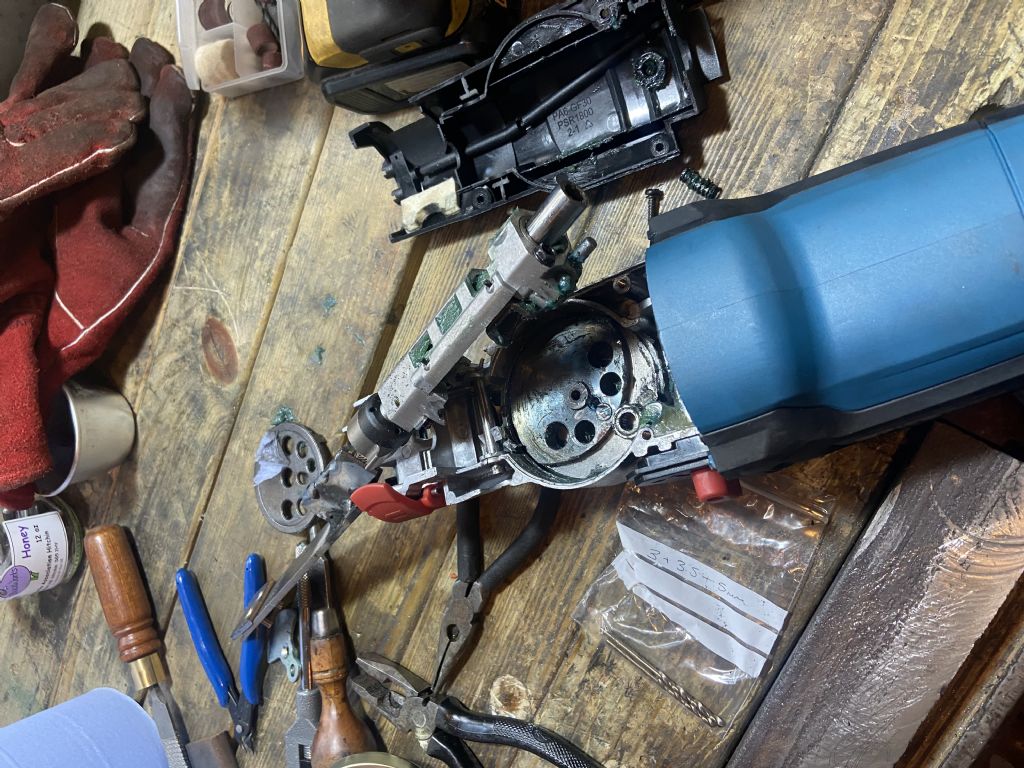One of the advantages of using hand/fingers to apply the oil-based blue is that you can sense the film thickness by the quality of the drag felt by the fingers. I'd imagine that, with a bit of practice, you could get a pretty even, thin film with your eyes shut. I've no experience of rollers or water-based media, so things might be easier, or at least different with them.
I assume you've come across the idea of pushing the scraper with your body, the handle having a suitably-shaped 'mushroom' load-spreading end. Most folk aren't strong enough to push hard enough, for long enough, with arms alone, on a job like your column's front face. For roughing, at least, where you need to hog off quite a bit of material, you can afford to, indeed need to, push downwards and forwards hard, creating deep furrows. It's hard work! This not only removes material, getting you towards the desired level, but it also breaks up the area of 'too high' material into smaller bits, which are than easier to scrape off.
Take heart – aiming is initially difficult, but it's a skill, and acquiring skills requires practice.
Sharpening has been mentioned. Different people have advocated different tip shapes. This suggests it's not critical, and, in any case, you will alter the contact geometry by the angle of attack you choose. The easiest way, I believe, is to hold the scraper vertically over the sharpening medium. Try to hold the handle's extreme end still between finger and thumb, fixed in space, but allow it to pivot, and then swing the blade sideways across the medium, from side to side (ie plane of swing is the plane of the blade). This will automagically produce a tip radius that is reasonably 'correct' for the handle length (but don't get too hung up on geometry). Carbide tips are wonderful, but the edge readily breaks down (in use and also when sharpening) into almost microscopic roughness, which causes scratches on the workpiece. A fine diamond plate works well, but not one of the 'perforated' ones – these can chip the edge. Check the edge with a 10X loupe.
Scraping an entire machine is a formidable task. As I get older, I'm increasingly aware that time is running out more quickly than is money (thanks to pensions…). My arthritic hands and wrists already limit some activities, and are only going to get worse, and I have a number of machines waiting to be restored. To hell with the expense – I feel a Biax coming on!
 peak4.
peak4.

